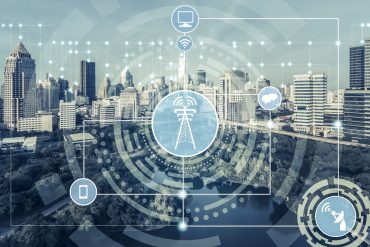
Brick-and-mortar stores are turning to smart retails applications, where technology is used in the traditional retail space to entice customers back.
Right now, it’s tough to be a retail company. That doesn’t mean retail isn’t doing everything it can to evolve. Smart retail might just bring customers back from pandemic shifts that saw online shopping boom and get people back into a physical store. And with everyone itching to get out after a year and a half of quarantine orders, it’s happening just in time.
Retail betting on experience
eCommerce disrupted traditional retail originally through a seamless shopping experience that removed friction. Amazon invented one-click. Computer vision changed visual search forever. Everything innovative came from online retail.
Physical retail stores are betting big on reinventing the in-store experience. Now that everything is digitized and seamless, brick-and-mortar stores are bringing more technology into the traditional retail space to entice customers back. And it looks like it’s working.
The Internet of Things allows both customers and stores to harness the power of data to customize and personalize the shopping experience. Stores can understand more about customer behavior in real-time, even in a physical location. Customers can also shop in real life while bringing some of the things they love about the internet with them.
See also: Continuous Intelligence Empowers Smart Mirrors
Radio Frequency Identification, RFID for short, opens up a world of smart possibilities. RFID uses a sensor signal to offer a wealth of either customer-facing or store-facing information.
Leveraging RFID
One use of RFID is smart shelves. Smart shelves enable:
- Better inventory tracking: Stores can follow inventory in real-time straight from the store shelves, gathering data to improve stocking and reduce unnecessary inventory.
- Better customer tracking: Stores receive a wealth of data from customers based on interactions with products on the shelves, allowing stores to personalize based on individual store data.
- Real-time price adjustments: Pricing errors cost stores big. Adjusting based on market conditions, human error, or customer behavior allows stores to create incentives customers care about.
- Shrinkage reduction: With real-time sensors, it’s easier to track what’s happening to missing inventory and potentially reduce loss.
RFID also allows customers to get more information about a product, much the way they’re used to shopping online. Customers could pick up inventory, for example, and read about its sourcing, manufacturing, materials, and history, all from one smart sensor and without having to track down a special machine or ask a salesperson.
The second use of RFID is the smart mirror, which can:
- Read sensors to tell customers what other sizes or colors of an item are available.
- Suggest comparable or popular products customers might also be interested in.
- Offer real-time feedback for what customers are trying on, purchasing, or leaving behind.
- Allow customers to find something different without leaving the dressing room.
Other location-detecting and sensing technologies based on Bluetooth, Wi-Fi, AI-based video analysis, in-store mobile apps, and beacons are complementing these applications. All can be used in smart retail applications to personalize the in-store experience.
Challenges for smart retail
Gathering data always brings risks and privacy issues. Companies must still comply with regulations such as GDPR, and changing regulations does carry compliance risk. However, for many companies, that risk is worth it, given the amount of potential data they can finally glean from a physical retail location.
Companies also face increasing costs and processing for these new data streams. Finding infrastructure that can distill data into real insights is now more important than ever. And with so much on the line for physical retail in the world of the internet, we’ll most likely see continued digital transformation efforts.






